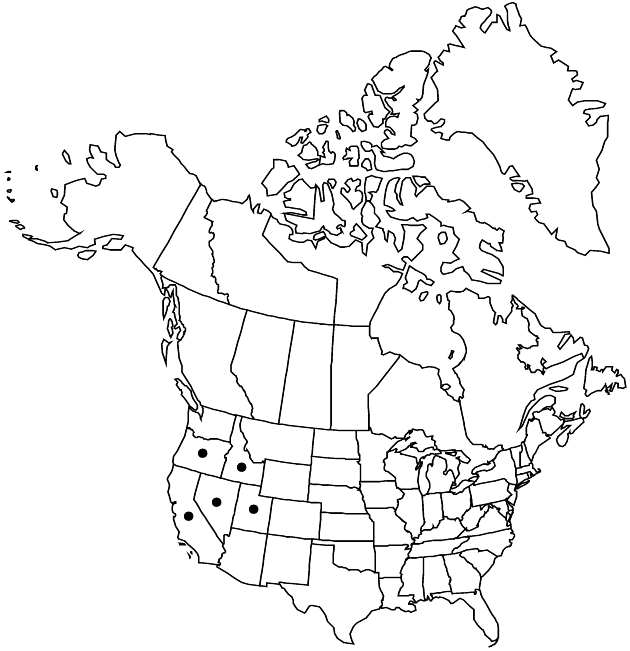Pyrrocoma racemosa
Fl. N. Amer. 2: 244. 1842.
Plants 20–75 cm. Stems 2–5, erect or strongly ascending, brownish to red-tinged, bases often curved, sparsely to moderately leafy, usually glabrous, sometimes sparsely tomentulose or villous, eglandular. Leaves: basal (tufted) petiolate, blades lanceolate or oblanceolate to elliptic, 50–200(–300) × 4–30 mm, margins spinulose-serrate to entire or undulate, ciliate, apices acute, sometimes recurved; cauline sessile, blades lanceolate, 10–40 × 2–4 mm, reduced distally; faces usually glabrous, sometimes villous. Heads (1–)3–15+ in spiciform, racemiform, or narrowly paniculiform arrays. Peduncles 0–2 cm. Involucres hemispheric to campanulate, 5–15 × 5–18 mm. Phyllaries in 4–5 series, lanceolate to oblanceolate or oblong, 6–13 mm, strongly unequal, margins sometimes ciliate, apices green, obtuse or acute, sometimes recurved, faces glabrous, sparsely tomentulose, or densely villous. Ray florets 7–28; corollas 5–12 mm. Disc florets 20–65; corollas 5–8 mm. Cypselae subcylindric, 2.5–5.5 mm, 4-angled, faces often sericeous or nearly glabrous; pappi tawny, 6.5–8.5 mm.
Distribution

w United States.
Discussion
Varieties 5 (5 in the flora).
Pyrrocoma racemosa is generally recognized by its erect stems, tufted leaves, and few to many heads in elongate, racemiform or spiciform arrays. It is the most variable species of Pyrrocoma, with numerous named varieties and subspecies. R. A. Mayes (1976) suggested that P. racemosa is closely related to the small-headed, racemiform species P. uniflora, P. apargioides, and P. lucida. The varieties are intergrading, making them somewhat difficult to identify.
Selected References
None.
Lower Taxa
Key
| 1 | Involucres 10–15 mm | > 2 |
| 1 | Involucres 5–9 mm | > 3 |
| 2 | Stems villous; basal leaf blades lanceolate; phyllaries densely villous | Pyrrocoma racemosa var. pinetorum |
| 2 | Stems usually glabrous, rarely tomentulose; basal leaf blades oblanceolate to elliptic; phyllaries glabrous | Pyrrocoma racemosa var. racemosa |
| 3 | Arrays narrowly paniculiform, racemiform, or spiciform, heads crowded only distally | Pyrrocoma racemosa var. paniculata |
| 3 | Arrays usually glomerate-spiciform, heads crowded | > 4 |
| 4 | Involucre 12–16 mm wide; phyllaries yellowish green, apices erect, faces sparsely tomentose at least proximally | Pyrrocoma racemosa var. congesta |
| 4 | Involucre 5–7 mm wide; phyllaries with pale chartaceous bases, apices recurved, green, faces glabrous | Pyrrocoma racemosa var. sessiliflora |